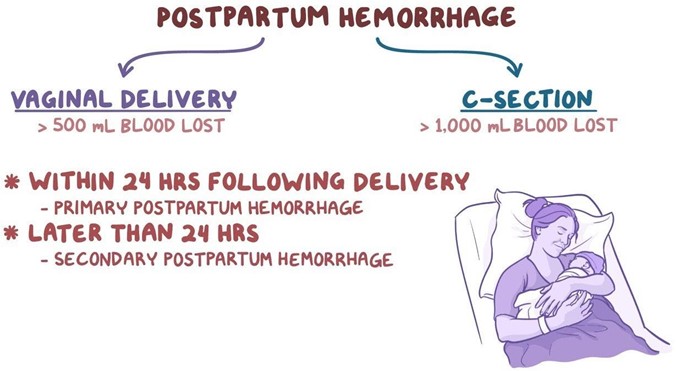An nurse is counseling a new mother about the immunologic properties of breast milk. The nurse emphasizes that breast milk is the main source of which specific immunoglobulin?
Select one:
IgG.
IgE.
IgA.
IgM.
The Correct Answer is C
Choice A Reason: IgG. This is an incorrect answer that refers to a different type of antibody that is not abundant in breast milk. IgG is a type of antibody that provides systemic immunity against various antigens. IgG is found in low concentrations in breast milk, as it does not cross the mammary epithelium easily. IgG can protect the infant from some infections, but it is mainly transferred from the mother to the fetus through the placenta during pregnancy.
Choice B Reason: IgE. This is an incorrect answer that refers to a different type of antibody that is not relevant to breast milk. IgE is a type of antibody that mediates allergic reactions and parasitic infections. IgE is found in very low concentrations in breast milk, as it does not have a significant role in mucosal immunity. IgE can trigger mast cells and basophils to release histamine and other inflammatory mediators, which can cause symptoms such as itching, swelling, or bronchoconstriction.
Choice C Reason: IgA. This is because IgA is a type of antibody that protects mucosal surfaces from pathogens and toxins. IgA is found in high concentrations in breast milk, especially in colostrum (the first milk produced after delivery). IgA can bind to bacteria and viruses in the infant's gastrointestinal tract and prevent them from ataching to the intestinal wall or crossing into the bloodstream. IgA can also enhance the infant's immune system by stimulating lymphoid tissue development and modulating inflammatory responses.
Choice D Reason: IgM. This is an incorrect answer that refers to a different type of antibody that is not abundant in breast milk. IgM is a type of antibody that activates complement system and agglutinates antigens. IgM is found in low concentrations in breast milk, as it does not cross the mammary epithelium easily due to its large size. IgM can protect the infant from some infections, but it is mainly produced by the infant's own immune system in response to exposure to antigens.
Nursing Test Bank
Naxlex Comprehensive Predictor Exams
Related Questions
Correct Answer is D
Explanation
Choice A Reason: Moderate amounts of deep red lochia. This is not a finding that would warrant further investigation, but rather a normal finding for the early postpartum period. Lochia is the vaginal discharge that occurs after delivery, which consists of blood, mucus, and tissue from the uterus. Lochia is usually deep red in color and moderate in amount for the first few days after delivery.
Choice B Reason: Sweating while afebrile. This is not a finding that would warrant further investigation, but rather a common occurrence in the postpartum period. Sweating is a mechanism of thermoregulation that helps the body eliminate excess fluid and electrolytes that were retained during pregnancy. Sweating does not necessarily indicate fever or infection.
Choice C Reason: Voiding 350 mL of blood-tinged urine. This is not a finding that would warrant further investigation, but rather an expected outcome for the postpartum period. Voiding large amounts of urine is normal in the postpartum period, as the body eliminates the excess fluid that was accumulated during pregnancy. Blood-tinged urine may be due to trauma or irritation of the urinary tract during labor or delivery, which usually resolves within a few days.
Choice D Reason: Heart rate of 115 beats/minute. This is because a heart rate of 115 beats/minute is higher than the normal range for an adult, which is 60 to 100 beats/minute. A high heart rate may indicate postpartum hemorrhage, infection, pain, anxiety, or dehydration. The nurse should further assess the client for other signs and symptoms of these conditions and notify the physician if necessary.

Correct Answer is C
Explanation
Choice A Reason: Continuing to monitor and document fetal heart rate. This is an inadequate response that does not address the urgency of the situation or intervene to prevent fetal distress or demise.
Choice B Reason: Changing the mother's position to left lateral and giving oxygen by nasal cannula. This is a partial response that may improve maternal-fetal blood flow and oxygenation, but it does not resolve the cord compression or facilitate delivery.
Choice C Reason: With a sterile glove, maintaining pressure to lift the presenting part and emergently notifying the provider for a STAT C-section. This is an appropriate response that aims to reduce the cord compression by elevating the fetal head away from the cord and prepare for an immediate cesarean delivery.
Choice D Reason: Bolusing the patient with 1000cc lactated ringers. This is an irrelevant response that does not address the cause of the problem or improve fetal outcome.
Whether you are a student looking to ace your exams or a practicing nurse seeking to enhance your expertise , our nursing education contents will empower you with the confidence and competence to make a difference in the lives of patients and become a respected leader in the healthcare field.
Visit Naxlex, invest in your future and unlock endless possibilities with our unparalleled nursing education contents today
Report Wrong Answer on the Current Question
Do you disagree with the answer? If yes, what is your expected answer? Explain.
Kindly be descriptive with the issue you are facing.
